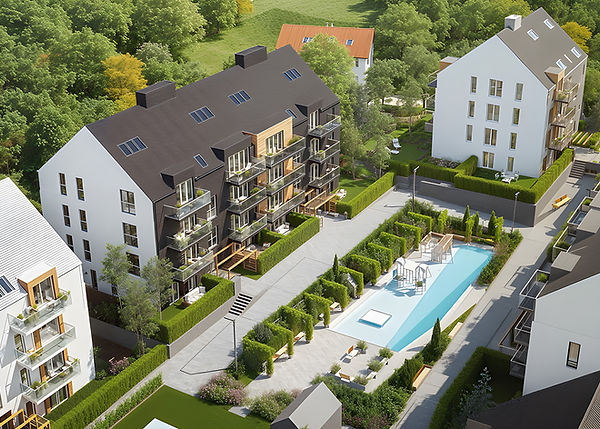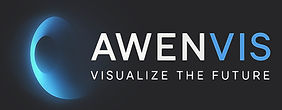
🏛️ How to create realistic architectural visualizations?
Today, realistic architectural visualization is much more than just a “pretty picture”—it’s a tool that helps sell investments, convince clients, and build a professional image for the designer or developer. But what makes a visualization look realistic and believable?
Here are the most important rules you need to know if you want to create top-quality architectural visualizations.
1. 📐 3D model accuracy
Realism begins with… geometric accuracy. The building design must be reproduced precisely – in accordance with the documentation, floor plans, heights, and architectural details.
✅ A visualization that deviates from reality loses credibility. Model with attention to detail.
2. 🌞 Natural light and shadows
Light determines the atmosphere of a scene. The time of day, the direction of the sun, the length of shadows – all of these influence the perception of a building.
✅ Use realistic lighting (e.g., HDRI) that replicates real-world atmospheric conditions. Remember to use soft shadows and subtle reflections.
3. 🧱 High-quality materials and textures
Plaster, glass, wood, concrete – each material must react appropriately to light and have a real texture.
✅ Use PBR (physically based rendering), add bump/normal maps, reflections, and irregularities. Materials that are “too clean” look artificial.
4. 🌳 Realistic environment
- The building itself isn’t enough. What’s happening around it—greenery, sidewalks, streets, lighting, sky—is of paramount importance. A high-quality environment adds context and scale.
- ✅ Use models of plants, people, and street furniture in appropriate proportions and compositions. Don’t overdo it with the number of elements – balance is key.
5. 🚶♂️ Add life and excitement
Nothing brings a visual to life like subtle movement or the presence of a human being. Walking figures, car headlights, a dog on a walk – all of these things make the viewer “enter” the scene.
✅ Architectural visualization should tell a story – show life around the investment.
6. 🎨 Post-production – the magic at the end
Rendering is just the beginning. Good visualizations go through post-production in Photoshop: color correction, white balance, contrast, background, light flares, and sometimes minor atmospheric effects (e.g., fog, reflections).
✅ Post-production can add a “filmic” touch, but it shouldn’t cover up rendering errors.
🧠 Bonus: Thinking Like a Photographer
Realistic visualization isn’t just about technique—it’s about composition, framing, perspective, and point of view. It’s worth thinking like a photographer:
- where to stand with the camera?
- what lens to use?
- what is in the foreground?
- where does the viewer’s eye lead?
✅ Conscious framing is 50% of the success of any good architectural visualization.
✨ Summary
- Realistic architectural visualization is created at the interface of:
- 🔹 precise modeling,
🔹 good knowledge of light and materials,
🔹 conscious composition,
🔹 and artistic sensitivity. - It’s a process that requires time, experience, and tools. But a well-executed visualization:
- ✔️ sells the project,
✔️ builds customer trust,
✔️ and gives you an advantage in the market.
